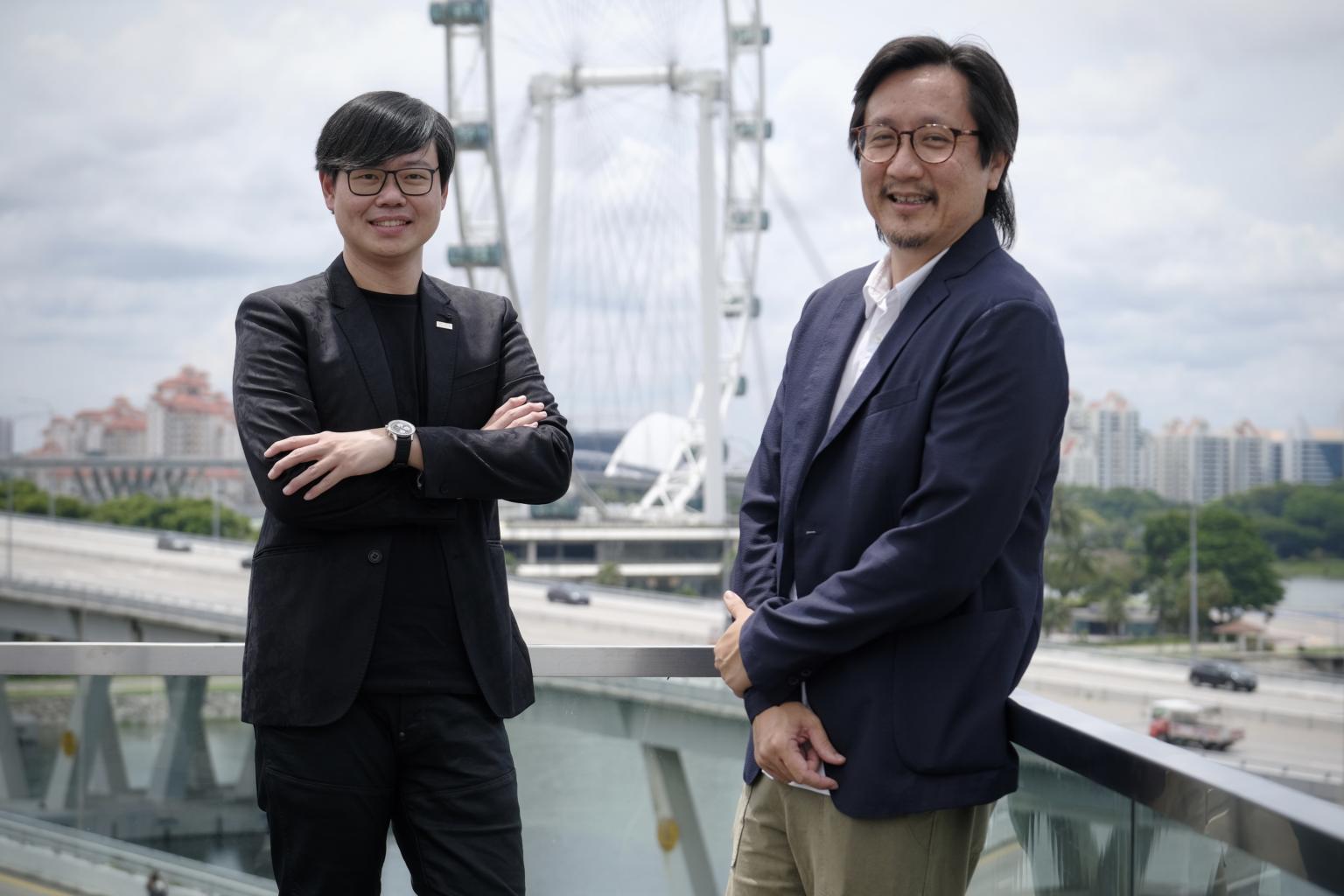Proposals for Paya Lebar Air Base development by architects, planners to be ready next month
Sign up now: Get ST's newsletters delivered to your inbox

Singapore Institute of Architects president Melvin Tan (left) and the institute's first vice-president Tiah Nan Chyuan.
ST PHOTO: THADDEUS ANG
Follow topic:
SINGAPORE - Connectivity, empathy and building for communities are buzzwords of urban development, and the public may soon see how such ideas translate into built form when proposals for the Paya Lebar Air Base area are shared later this year.
The Paya Lebar Air Base area, which is sandwiched between Hougang and Serangoon to its west and Pasir Ris and Tampines to its east, will have 800ha freed up for development when the airbase is relocated in the 2030s.
Two teams from the Singapore Institute of Architects (SIA) and the Singapore Institute of Planners are currently developing conceptual ideas and proposals for the area in collaboration with the Urban Redevelopment Authority (URA), and they are expected to be ready next month.
In an interview with The Straits Times earlier this month, SIA's newly elected leadership said that because the URA's long-term land use plan review is running alongside the Paya Lebar planning exercise, architects and planners have been able to adapt some ideas raised during the review in their plans for the area.
The institute's first vice-president Tiah Nan Chyuan said: "You can always talk about connectivity and empathy, or building for communities in a manner that is meaningful and endearing, but what do these look like?
"Now there is an opportunity to translate some of these words into actual working drawings and diagrams."
Last month, National Development Minister Desmond Lee said that those working on the project have suggested creating a heritage district out of the cluster of old airport buildings on site, while others suggested making the area a "happiness project" that promotes community bonding.
SIA president Melvin Tan, 47, said the teams have completed the concept master plan for the area and have moved on to the urban design phase, which is slated for completion next month.
He added that the public sector has been engaging more extensively with the private sector as well as the public in the long-term plan review.
For its part, the institute organised a workshop on the review for its members, with participants bringing drawings and sketches to illustrate their ideas.
Mr Tiah, 45, said some conversations during this workshop piqued URA's interests, and the agency is set to engage SIA members further.
While conversations are in their infancy, Mr Tiah said these discussions are likely to involve a broad range of stakeholders.
"The idea here is policy is no longer a public sector-only domain, the private sector has a role to play," he said.
Besides discussions, Mr Tan said he believes the increasingly consultative approach that the Government is taking means private sector architects will have more opportunities to help realise some of the targets that Singapore has set in the coming decades.
This, to him, is welcome, given architects' role in the built environment, which goes beyond just designing buildings but also involves upstream planning.
Citing the country's sustainability goals, such as plans to phase out internal combustion engines by 2040, Mr Tan said architects are well-placed to help realise these goals through their "integrator role".
This involves coordinating the work of various parties such as developers and engineers, as they collectively translate policymakers' goals into infrastructural changes on the ground.
While the Government sets policy and land developers have a vision for their projects, said Mr Tan, it is architects who will turn these into tangible outcomes for everyday users, such as by planning for substations for increased power load and vehicle charging provisions.
With limited new land to build on, Mr Tiah added that building on brownfield sites - those which have been developed previously - will be a big part of Singapore's development in the coming years.
Noting that the adaptive re-use of buildings can be more sustainable as it avoids the carbon footprint of demolition and rebuilding, Mr Tiah said schools are one building type suited for new uses.
"A lot of these structures sit in existing neighbourhoods and communities, and when they get torn down it's actually a big disruption," he said, adding that the Government has already re-used some school campuses.
"These are perfect examples of infrastructure that has already served its primary purpose, and are now starting to serve the neighbourhood in different ways," said Mr Tiah, who added that a lot of attributes of schools can be easily adapted for various uses, such as using canteens for communal dining, halls for activity spaces and school fields for urban farms.
Mr Tan added that besides creatively repurposing built infrastructure, there is scope to consider how Singapore's green and blue spaces may change over time, and how these can be factored into the country's plans.
Citing Dover Forest - a former plantation site that has been covered by secondary forests after the plantation was abandoned - Mr Tan said green and blue spaces are not static and planning should account for this.
In the case of Dover Forest, the Housing Board revised its plans for it last year and announced that development plans for the forest's western half will be put on hold and reviewed in about a decade. Meanwhile, a sizeable nature park will be established in it.
Said Mr Tan: "Green and blue spaces can dynamically evolve with the city, and also be integrated into our developments."

